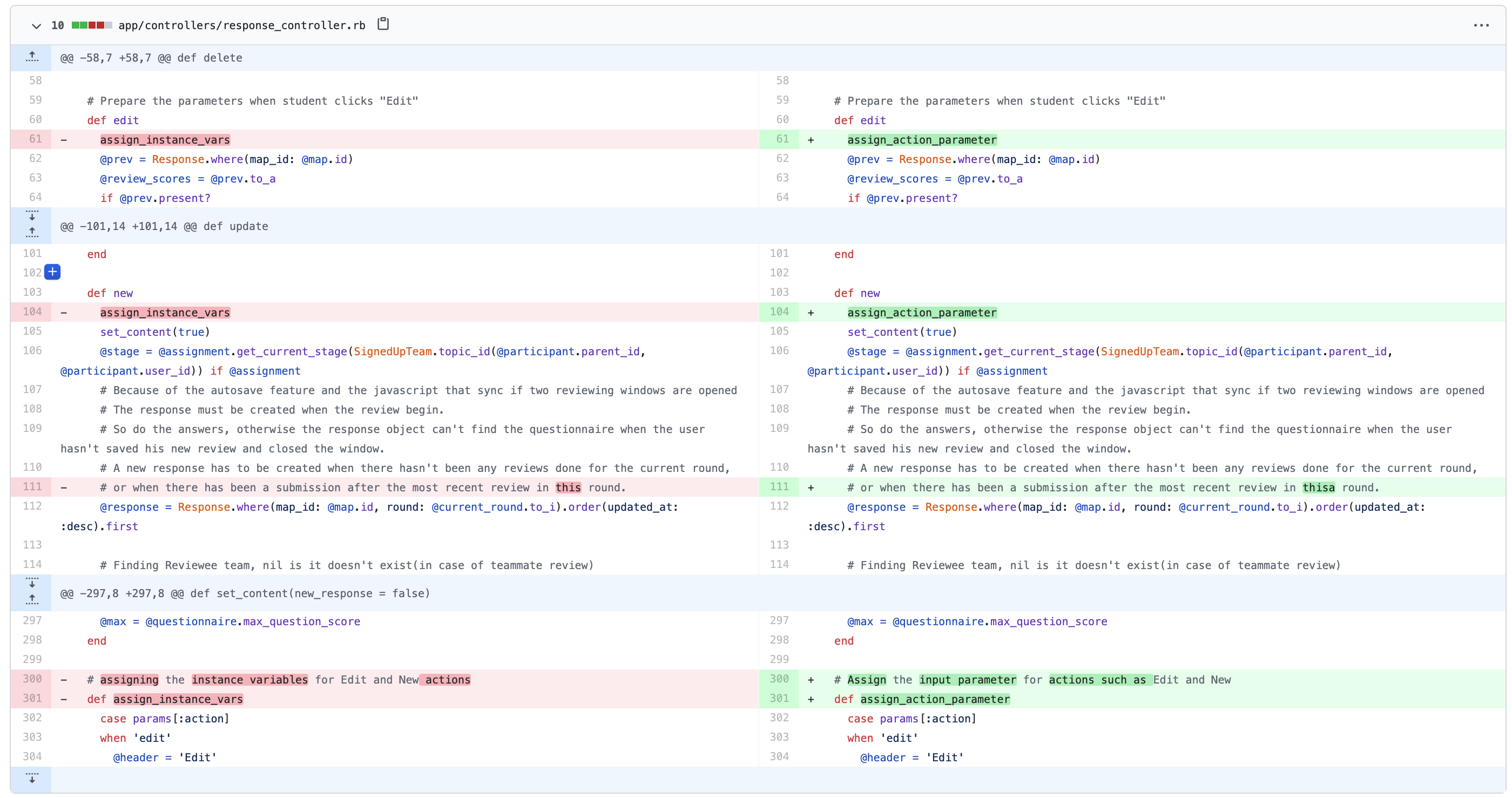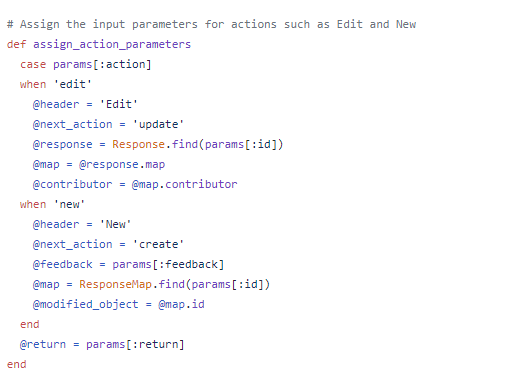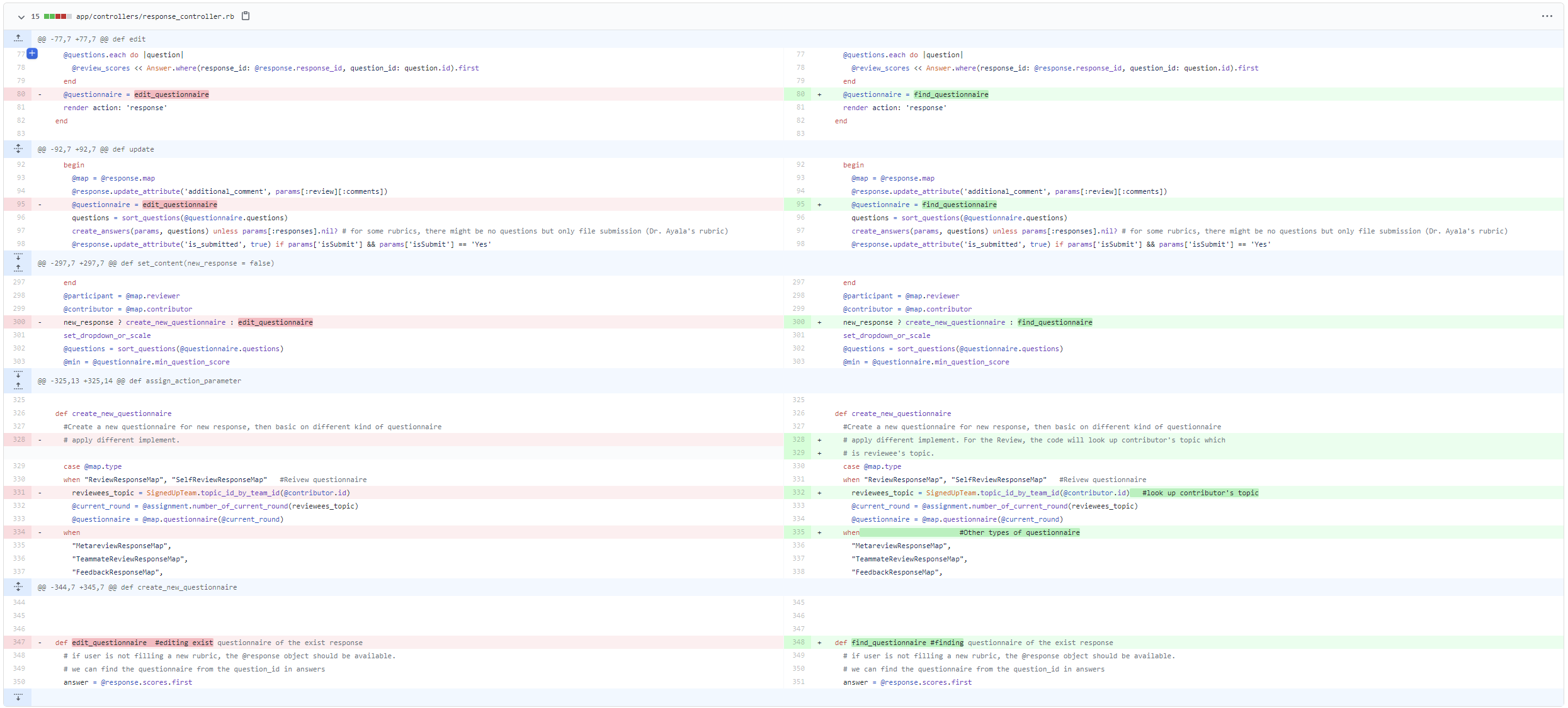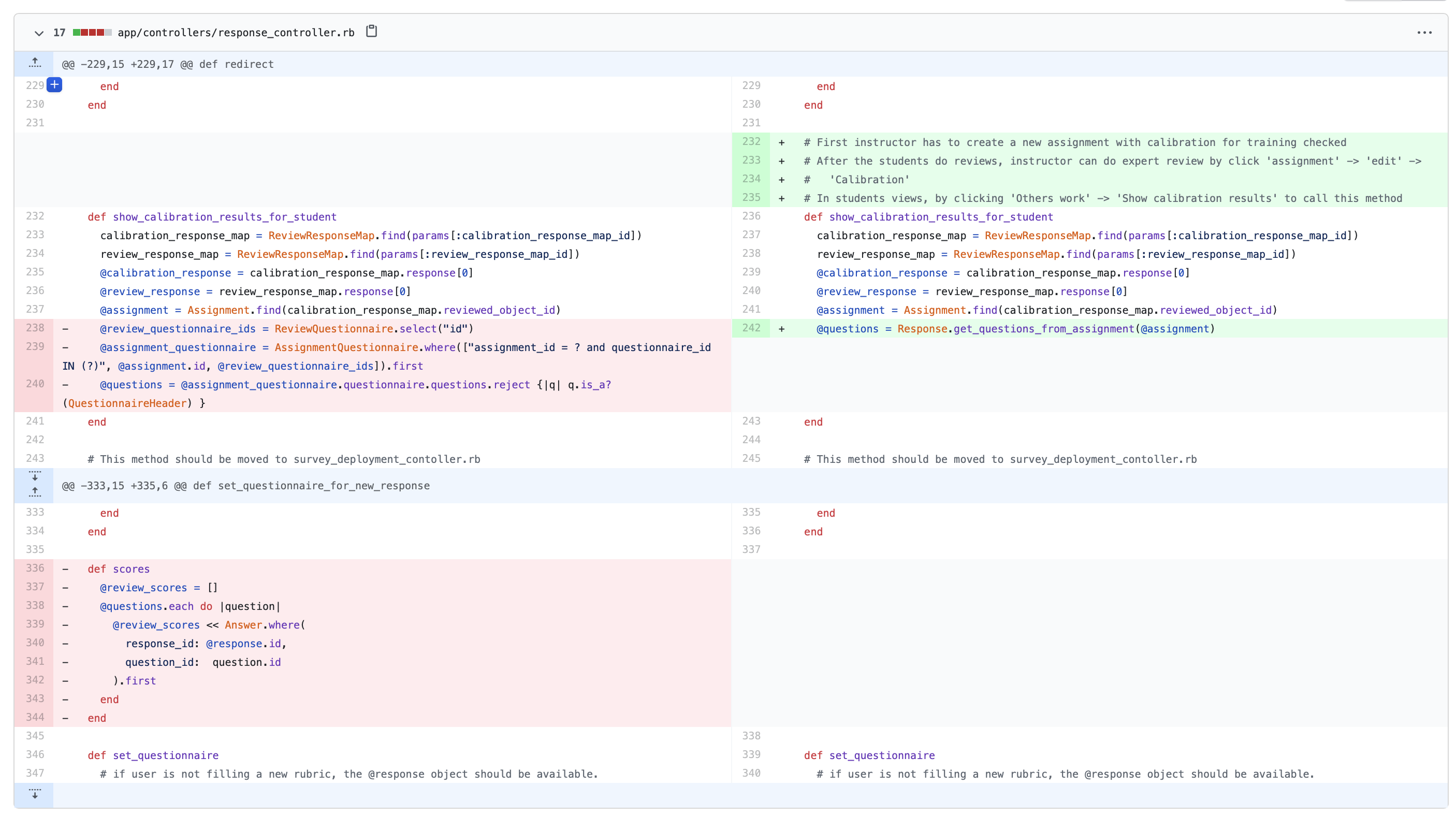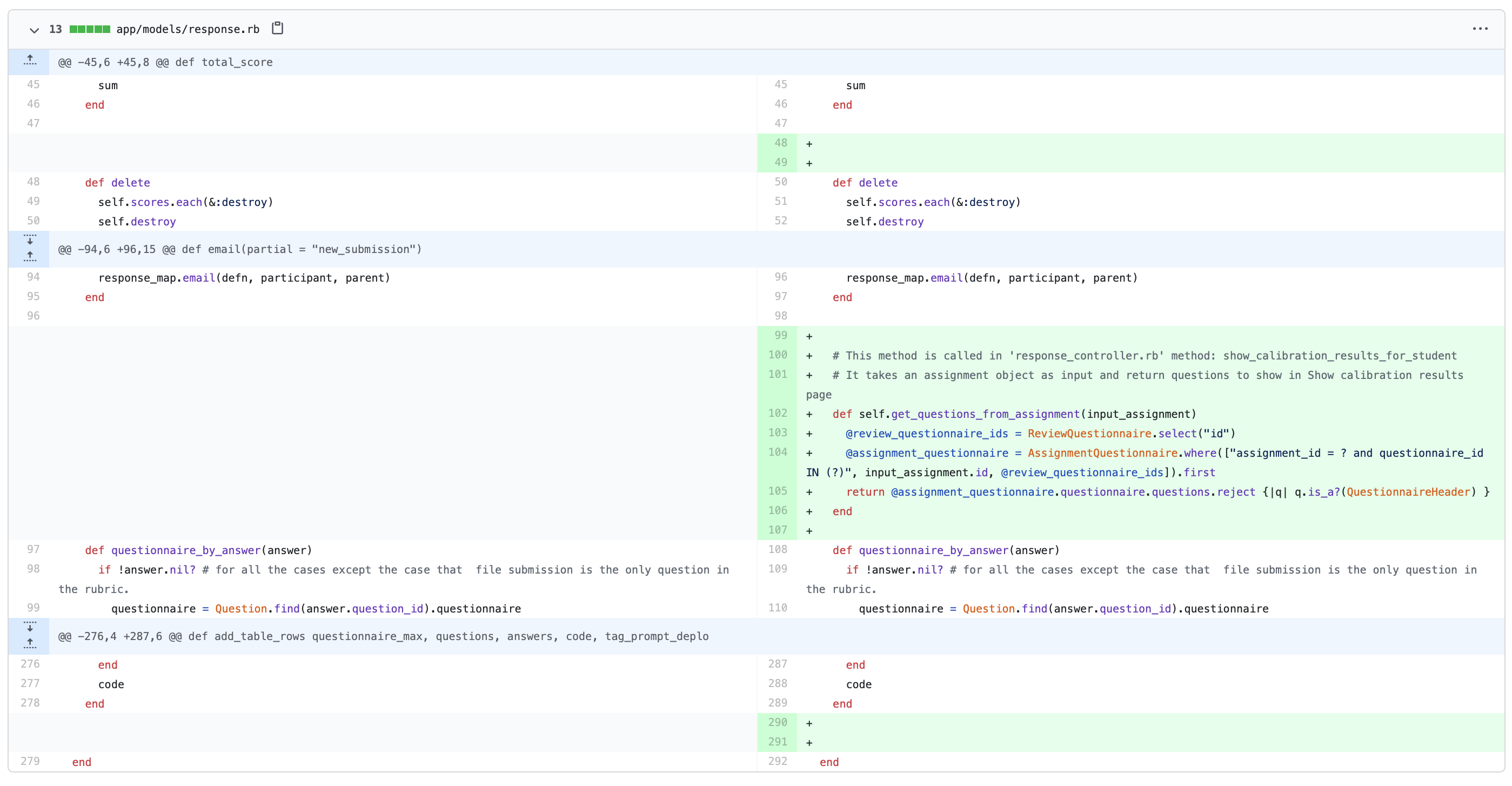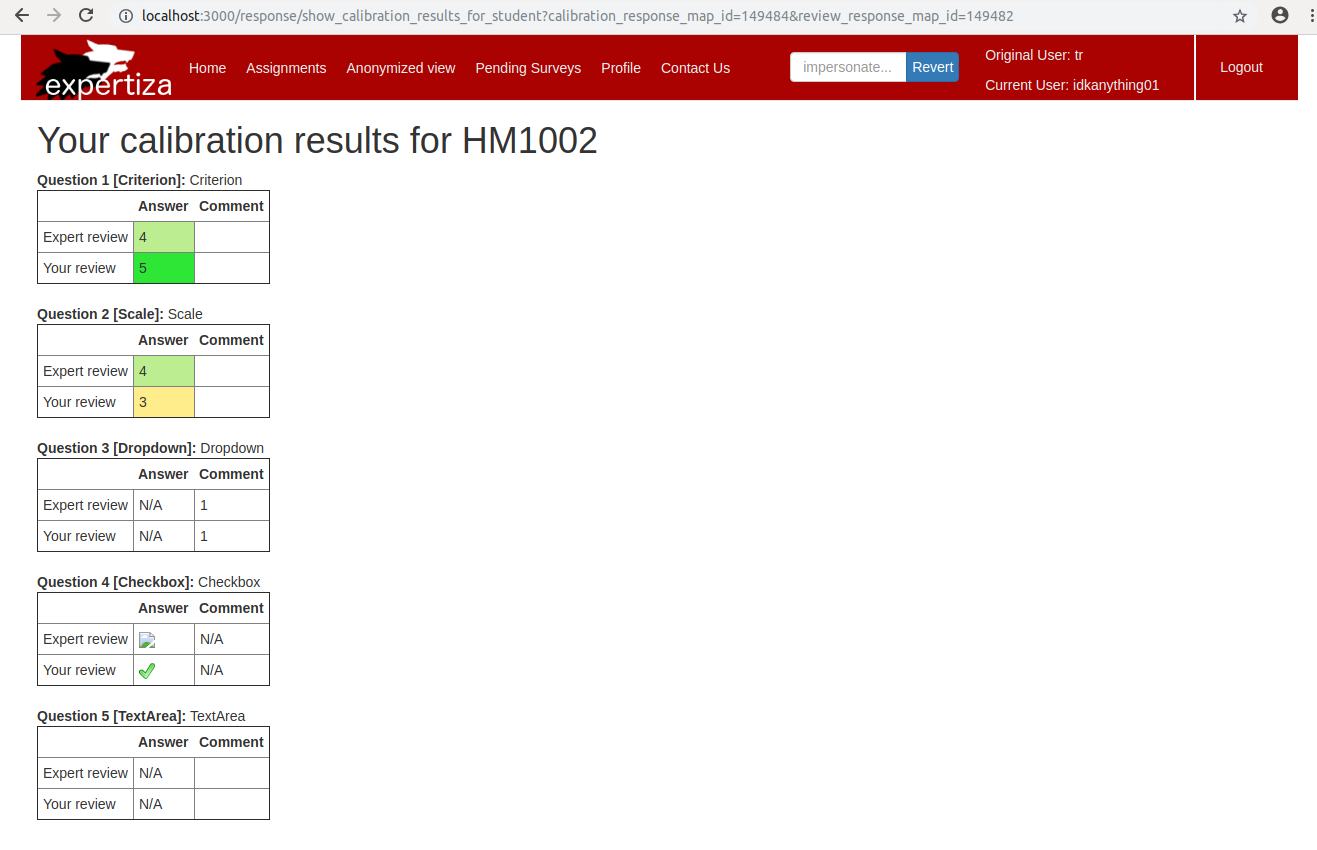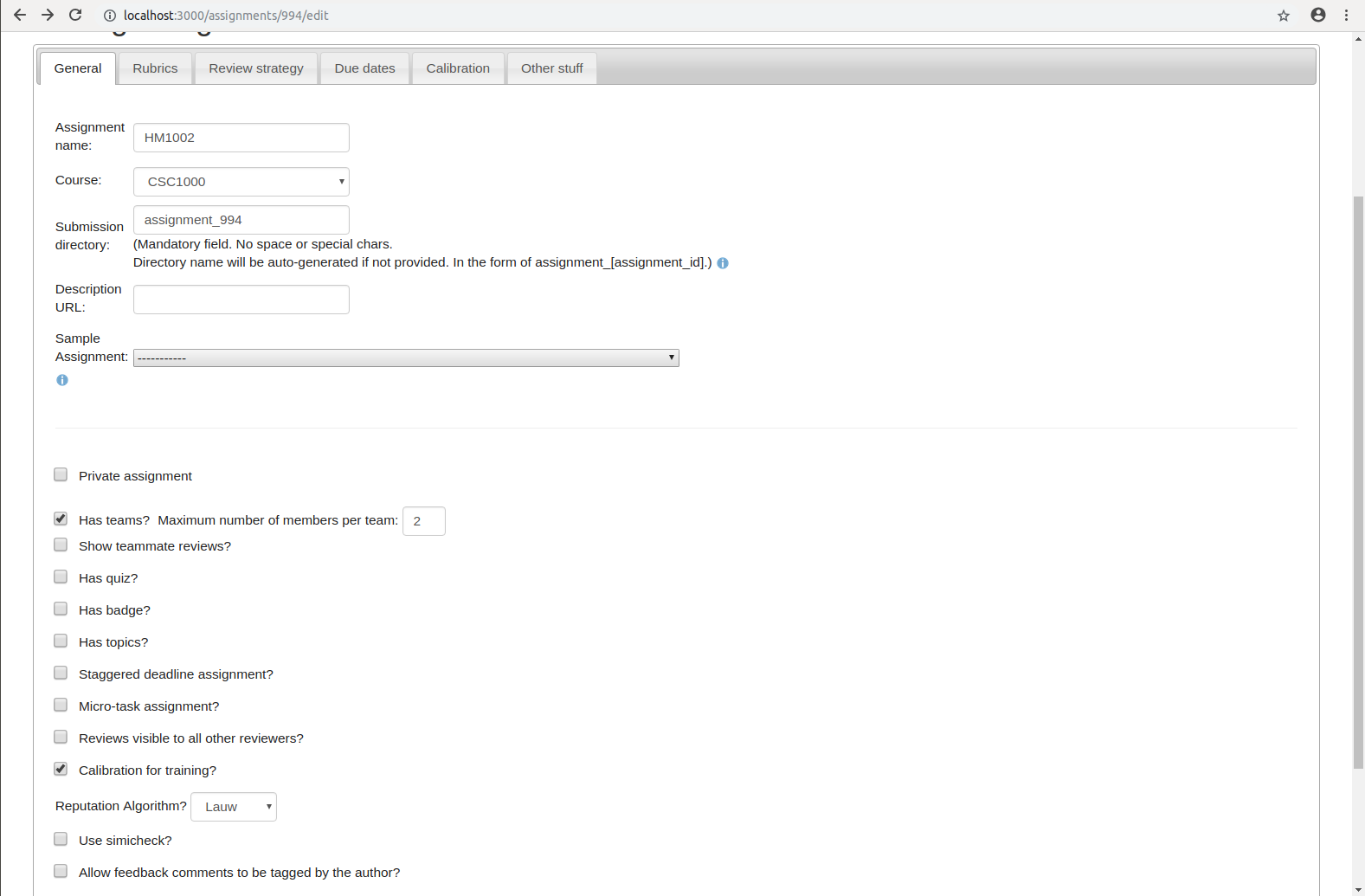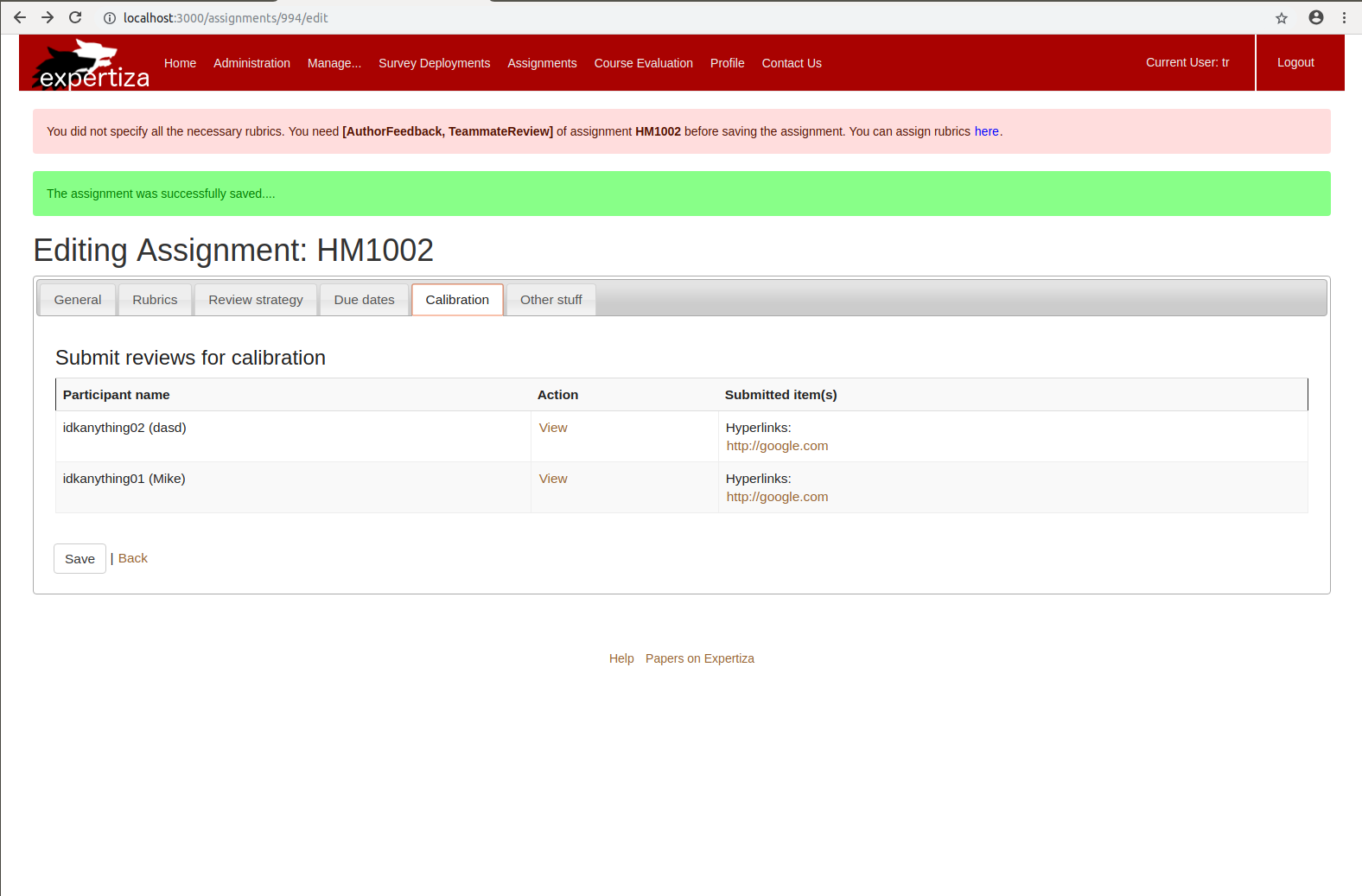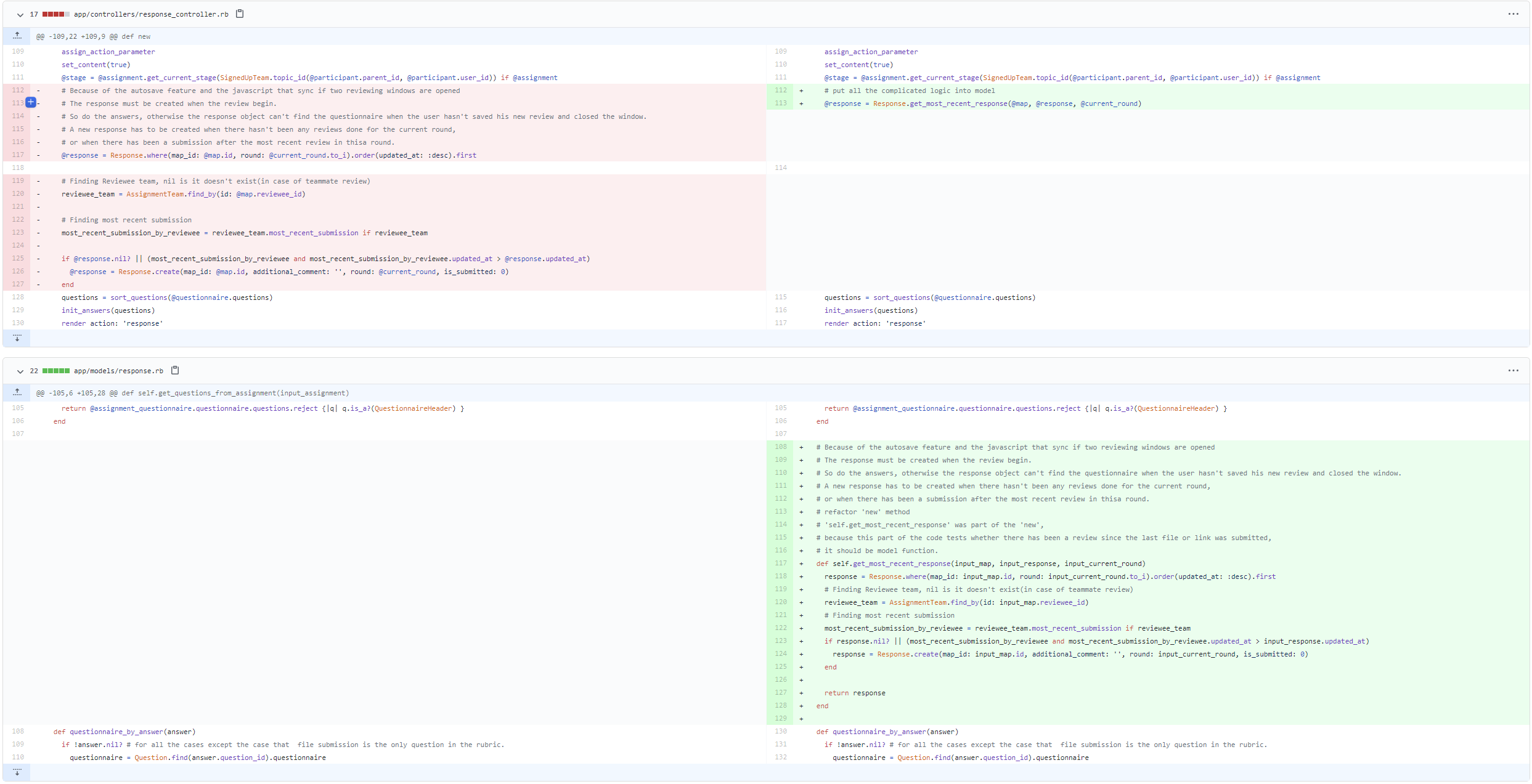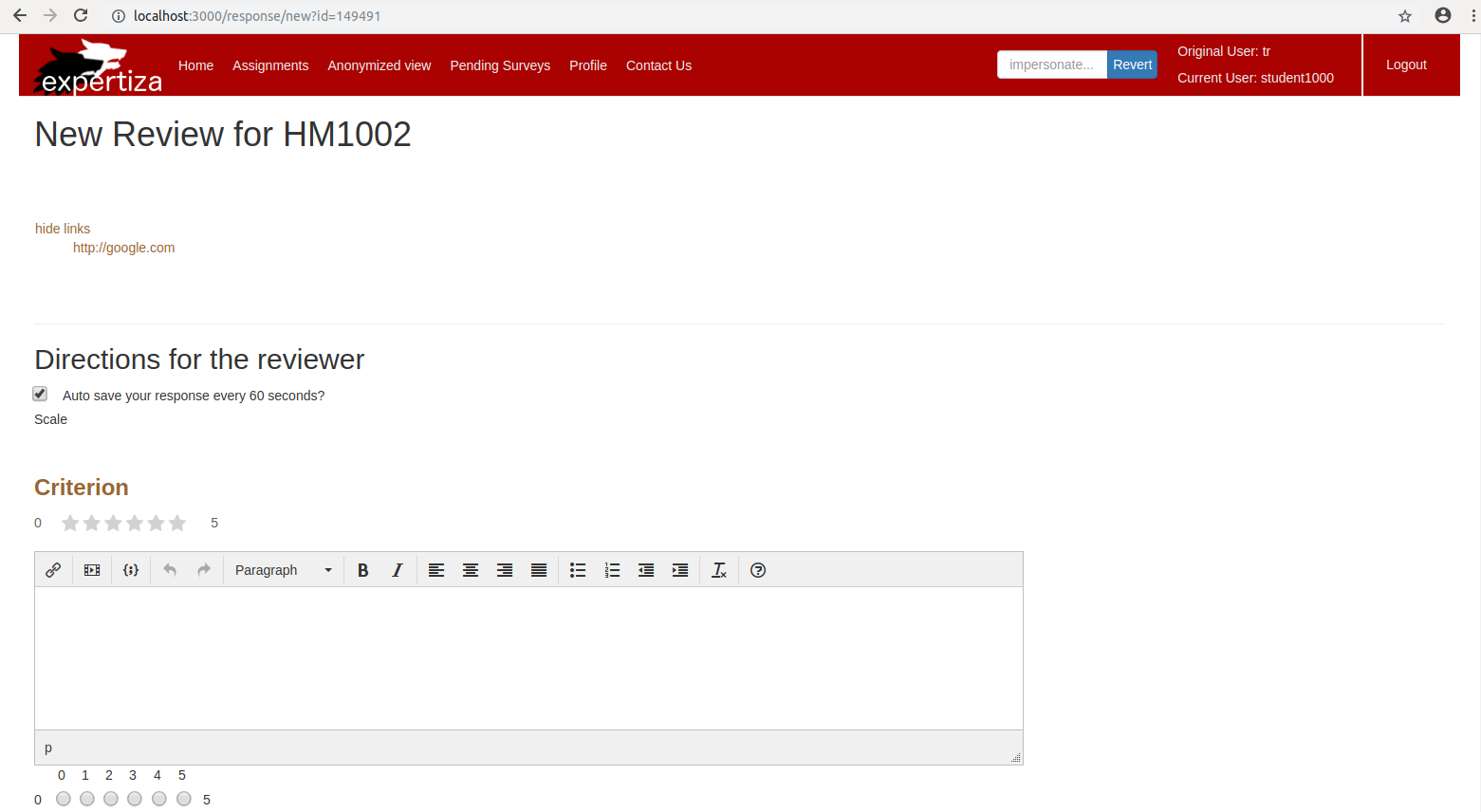CSC/ECE 517 Fall 2020 - E2070. Refactor response controller.rb
Project Background
A response is the object that is created when someone fills out a review rubric, such as when one writes a review, gives feedback to a reviewer, or fills out a survey. Responses to the individual rubric items are kept in Answer objects; each Answer object has a response_id to say what Response it is part of. Since response_controller needs to work with many kinds of responses, its code is pretty general. It is not the worst controller in the system, but it would be much clearer if its method names were more descriptive of what they do.
Project Team Member
- Chenwei Zhou (czhou6)
- Tianrui Wang (twang33)
- Xinran Li (xli56)
Goal of this Project
This project tries to modify and refactor the response_controller.rb in a more clear way
Files Involved
response_controller.rb
response.rb
Issue
Methods need to be fixed
- def assign_instance_vars
- def scores
- def new
- def set_questionnaire
- def set_questionnaire_for_new_response
- def show_calibration_results_for_students
Recommandation from mentor
- def assign_instance_vars : This name could be more specific.
- def scores : This should be a model method (in response.rb)! It is all calculation.
- def new : This method contains a complicated condition that determines whether the submission has been updated since the last time it was reviewed. If it has not, then the reviewer can edit his/her previous review. If there has been an update, then the reviewer gets a new review form to “update” the review. It would make sense to have a model method that tests whether there has been a review since the last file or link was submitted. Then the code here would just call that function. It would be a lot clearer what the new method is doing. set_content(new_response = false) also plays a role in this calculation. Perhaps this method should also be included in the refactoring, for the sake of clarity of the resulting code.
- def set_questionnaire : Badly named; what kind of questionnaire and why? The name should be a lot clearer.
- def set_questionnaire_for_new_response : Badly named, no comments, not at all clear. The logic is not like set_questionnaire. Rename, refactor for clarity, and add comments as appropriate.
- def show_calibration_results_for_student : This method makes about five db accesses. Can it be broken into 2 methods, with the business logic moved to response.rb?
Refactor & Code Modification
We did the following refactor to make this method more clear:
METHOD: def assign_instance_vars
- the instance variables are actually action handles to the views from controller including "new" and "edit", thus refactoring method name to assign_action_parameters would be better to understand what this method is trying to do.
- This method is a private helper method and is used in new and edit methods to set the action parameters for the new and edit actions
- After renaming, the method became more clear of what it's doing
METHOD: def scores
- This method was already defined in other classes and is useless in the current class, thus remove it would be a reasonable choice.
METHOD: def set_questionnaire
- In the method set_content in response_controller.rb, there is one line of code that "new_response ? set_questionnaire_for_new_response : set_questionnaire". Thus, we can tell the method set_qustionnaire will called when new_response is false, which means that the object was triggered by an existing response. In the method set_questionnaire, the line of code that “@questionnaire = @response.questionnaire_by_answer(answer)”, which is looking up the questionnaire answered by this existing response. Therefore, refactoring the method name to find_quesetionnaire would be better to understand.
METHOD: def set_questionnaire_for_new_response
- In the method set_content in response_controller.rb, there is one line of code that "new_response ? set_questionnaire_for_new_response : set_questionnaire". Thus, we can tell the method set_qustionnaire will called when new_response is true, which means that the object was triggered by a new response. In the set_questionnaire_for_new_response method, the "cast" statement informs us that the new questionnaire are created based on the types or Reviewers, such as Review, Metareview, Teammate Review and so on. Therefore, refactoring the set_questionnaire_for_new_response method to create_new_questionnaire would be better to understand.
METHOD: def show_calibration_results_for_student
- This method shows the result of expert review for reviewer after teacher or TA submit the calibration by editing the assignment.
- The method makes about five database accesses and the code is quite messy and thus break it into 2 methods with the business logic moved to response.rb would be a good way to make the code in controller cleaner.
- The method get_questions_from_assignment is the part that's inside the model class and contains logic of mapping reviews with assignments in the questionnaire and return questions in the joined table
show_calibration page
Teacher's action to triggle this function
After calibration function is activated
METHOD: def new
- This method contains a complicated condition that determines whether the submission has been updated since the last time it was reviewed. If it has not, then the reviewer can edit his/her previous review. If there has been an update, then the reviewer gets a new review form to “update” the review.
- So we break the new method into two methods: new and get_most_recent_response and put the logic into the response controller class.
- The method get_most_recent_response in the model class tests whether there has been a review since the last file or link was submitted and in the controller this method was called to get the newest response.
- The new method after refactoring, now the code is quite clear and with only one appearance of variable "@response"
